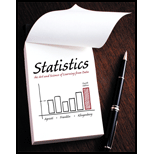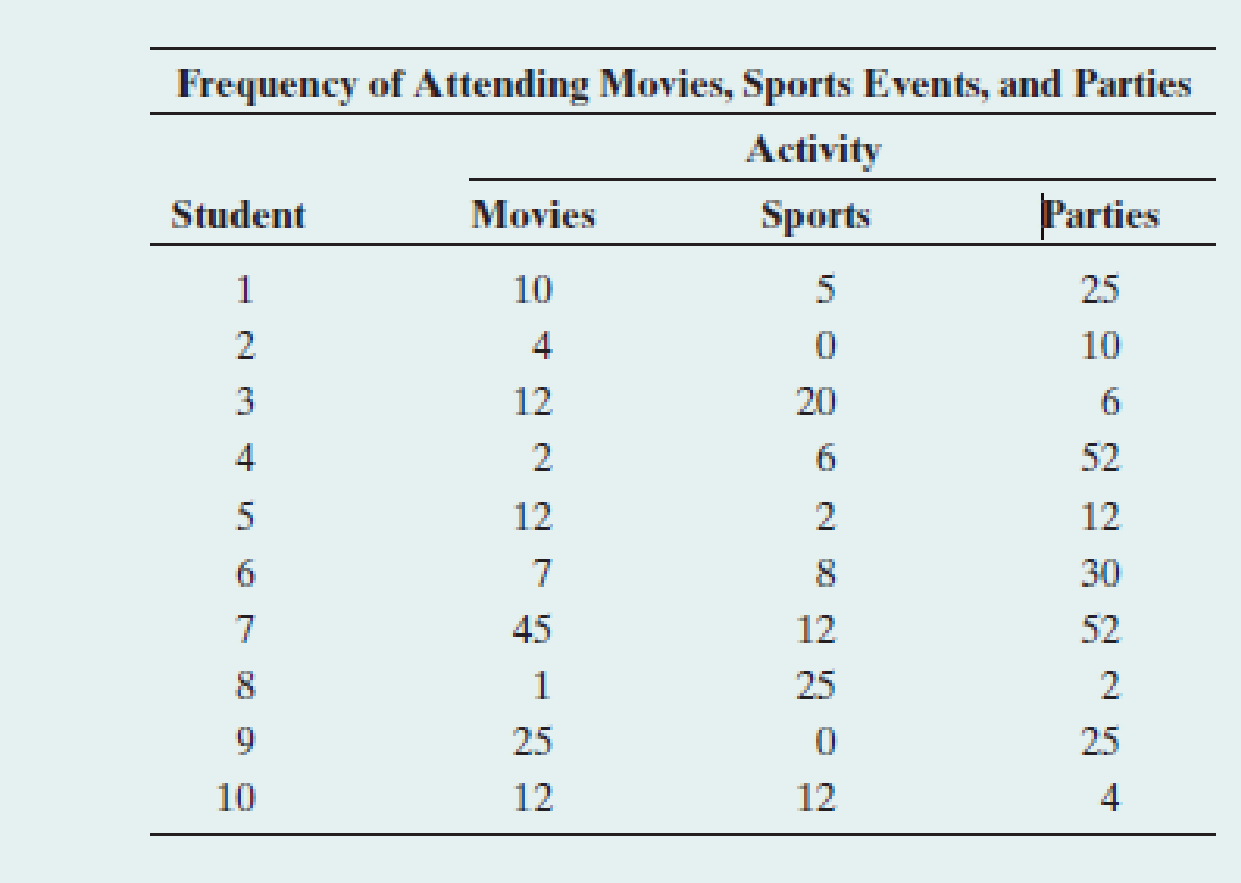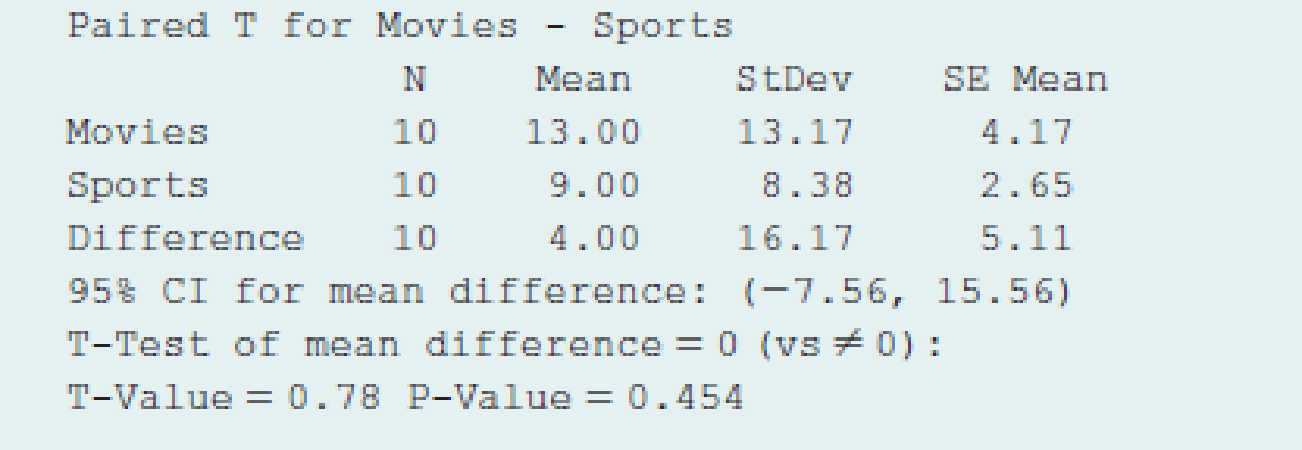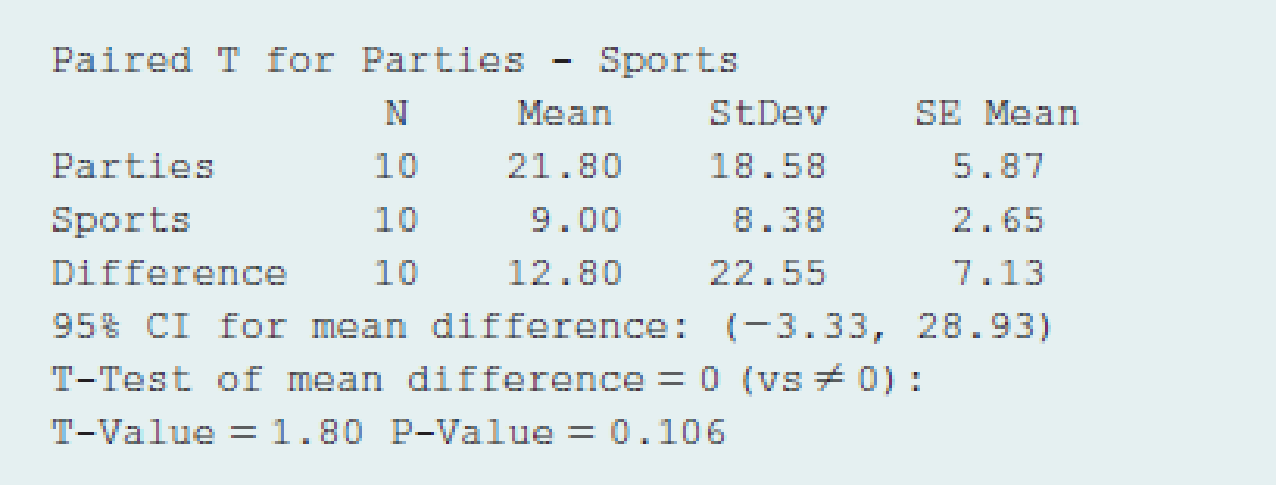
Movies versus parties Refer to the previous two exercises. Using software, compare the responses on movies and parties using (a) all steps of a significance test and (b) a 95% confidence interval. Interpret results in context.
10.51 Social activities for students As part of her class project, a student at the University of Rorida randomly sampled 10 fellow students to investigate their most common social activities. As part of the study, she asked the students to state how many times they had done each of the following activities during the previous year: going to a movie, going to a sporting

- a. To compare the
mean movie attendance and mean sports attendance using statistical inference, should we treat the samples as independent or dependent? Why? - b. The figure is a dot plot of the n = 10 difference scores for movies and sports. Does this show any irregularities that would make statistical inference unreliable?

Dot plot of difference scores.
- c. Using the MINITAB output shown for these data, show how the 95% confidence interval was obtained from the other information given in the printout. Interpret the interval.
- d. Show how the test statistic shown on the printout was obtained from the other information given. Report the P-value and interpret in context.
MINITAB Output for Inferential Analyses:

10.52 More social activities Refer to the previous exercise. The output shows the result of comparing the mean responses on parties and sports.

- a. Explain how to interpret the reported 95% confidence interval.
- b. State the hypotheses to which the P-value refers and interpret its value.
- c. Explain the connection between the results of the test and the confidence interval.
- d. What assumptions are necessary for these inferences to be appropriate?
Want to see the full answer?
Check out a sample textbook solution
Chapter 10 Solutions
Statistics: The Art and Science of Learning From Data, Books a la Carte Edition (4th Edition)
- solve the question based on hw 1, 1.41arrow_forwardT1.4: Let ẞ(G) be the minimum size of a vertex cover, a(G) be the maximum size of an independent set and m(G) = |E(G)|. (i) Prove that if G is triangle free (no induced K3) then m(G) ≤ a(G)B(G). Hints - The neighborhood of a vertex in a triangle free graph must be independent; all edges have at least one end in a vertex cover. (ii) Show that all graphs of order n ≥ 3 and size m> [n2/4] contain a triangle. Hints - you may need to use either elementary calculus or the arithmetic-geometric mean inequality.arrow_forwardWe consider the one-period model studied in class as an example. Namely, we assumethat the current stock price is S0 = 10. At time T, the stock has either moved up toSt = 12 (with probability p = 0.6) or down towards St = 8 (with probability 1−p = 0.4).We consider a call option on this stock with maturity T and strike price K = 10. Theinterest rate on the money market is zero.As in class, we assume that you, as a customer, are willing to buy the call option on100 shares of stock for $120. The investor, who sold you the option, can adopt one of thefollowing strategies: Strategy 1: (seen in class) Buy 50 shares of stock and borrow $380. Strategy 2: Buy 55 shares of stock and borrow $430. Strategy 3: Buy 60 shares of stock and borrow $480. Strategy 4: Buy 40 shares of stock and borrow $280.(a) For each of strategies 2-4, describe the value of the investor’s portfolio at time 0,and at time T for each possible movement of the stock.(b) For each of strategies 2-4, does the investor have…arrow_forward
- Negate the following compound statement using De Morgans's laws.arrow_forwardNegate the following compound statement using De Morgans's laws.arrow_forwardQuestion 6: Negate the following compound statements, using De Morgan's laws. A) If Alberta was under water entirely then there should be no fossil of mammals.arrow_forward
- Negate the following compound statement using De Morgans's laws.arrow_forwardCharacterize (with proof) all connected graphs that contain no even cycles in terms oftheir blocks.arrow_forwardLet G be a connected graph that does not have P4 or C3 as an induced subgraph (i.e.,G is P4, C3 free). Prove that G is a complete bipartite grapharrow_forward
 College Algebra (MindTap Course List)AlgebraISBN:9781305652231Author:R. David Gustafson, Jeff HughesPublisher:Cengage Learning
College Algebra (MindTap Course List)AlgebraISBN:9781305652231Author:R. David Gustafson, Jeff HughesPublisher:Cengage Learning Glencoe Algebra 1, Student Edition, 9780079039897...AlgebraISBN:9780079039897Author:CarterPublisher:McGraw Hill
Glencoe Algebra 1, Student Edition, 9780079039897...AlgebraISBN:9780079039897Author:CarterPublisher:McGraw Hill
 Holt Mcdougal Larson Pre-algebra: Student Edition...AlgebraISBN:9780547587776Author:HOLT MCDOUGALPublisher:HOLT MCDOUGAL
Holt Mcdougal Larson Pre-algebra: Student Edition...AlgebraISBN:9780547587776Author:HOLT MCDOUGALPublisher:HOLT MCDOUGAL



